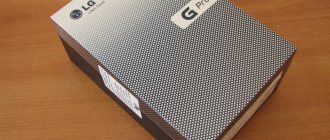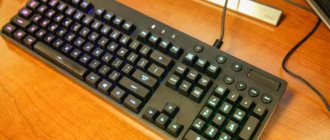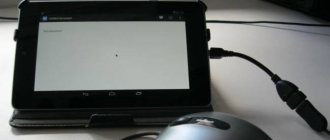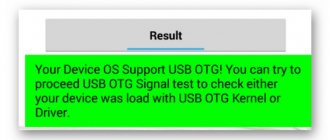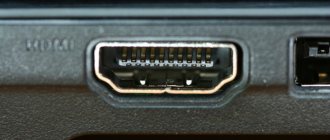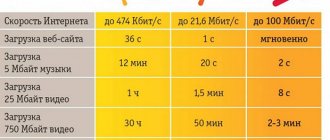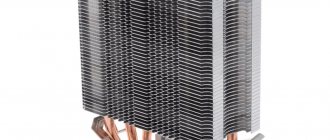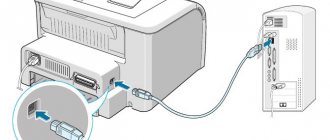Spectacular wheel? part II
Logitech MOMO Racing Force Feedback Wheel Here is the second part of the “Spectacular Wheel”! For now, I find it difficult to answer how many more parts of this material will appear in the future, but by the way, that’s not what’s important right now. The important thing is that two, as we know, is more than one. Therefore, since we are considering more than one device, we have the opportunity to compare and choose. It is to comparisons that I will begin to resort to in this and the following parts of the “Effective Wheel”. As I already wrote in the first part of this series of articles, I will consider gaming manipulators such as steering wheels, equipped with a vibration feedback function. This limitation, of course, reduces the total number of manipulators that could be considered. However, vibration feedback is all the rage these days, and the number of robotic arms equipped with this feature is growing every day. So, we still have a lot to consider, and you have a lot to choose from.
Logitech MOMO Racing Force Feedback Wheel
You can start comparing the wheel we are reviewing today with the Thrustmaster F1 Force Feedback wheel, which was reviewed in the first part of the Spectacular Wheel, right from the box. The difference in size really catches your eye. The small packaging of the Thrustmaster F1 looks very small next to the packaging of the Logitech MOMO steering wheel, which measures 43x40x34cm. The design of the boxes is also very different, and it is hardly possible to mix up the steering wheels. So, in contrast to the playful colorful look of the Thrustmaster, the design of the Logitech MOMO packaging is much more strict, with its entire appearance hinting at the solidity of the contents. The kits that come with both the Logitech steering wheel and the Thrustmaster steering wheel are very similar and differ only in the presence or absence of advertising waste paper. In the Logitech MOMO box you will literally find the following:
- Steering wheel
- Pedals
- Network adapter
- CD with drivers and software
- Quick User Guide
- Advertising papers (assorted)
It was possible to do without advertising, but the user manual, although it is very short, seems to me to be useful. Among others, it also has a Russian-language part, in which you can find useful information.
In describing the Logitech MOMO, I want to follow the same sequence of presentation that I chose to describe the game controller from Thrustmaster in the first part of the Effect Wheel. This will not only greatly facilitate my work, but will also make it more convenient for the reader to compare materials if they so desire (naturally, I mean comparing the game controllers themselves based on my materials). Therefore, I will start looking at the Logitech MOMO steering wheel by describing the process of installing and connecting it.
Installation and connection
Pedals - Logitech also has pedals. And it seems that, from the point of view of ease of installation, nothing new can be invented in them. Ah, no. It turns out that here, too, there is freedom for engineering to fly, and the design of pedals for “gaming steering wheel-type manipulators” may differ from one manufacturer to another. And we can verify this using the example of Logitech MOMO. Taking care of the user, when creating the pedals of this manipulator, the designers took into account almost all situations. In other words, they took into account the fact that the room where Logitech MOMO will be installed will not necessarily have smooth parquet or linoleum flooring. For such coverings, the bottom cover of the Logitech MOMO pedals, like most of these manipulators, has four rubber feet. For those cases when there is carpet on the floor, a simple, but at the same time very practical device is provided. It is a plastic strip, the surface of which is covered with plastic spikes that are inclined towards the rear of the body, that is, in the direction opposite to the direction in which the body is supposed to slide. If you do not have carpet on the floor and there is no need to additionally hold the pedals with cleats, you can press on this bar and slightly recess it into the body until the latches click. If you have a carpet or rug on the floor, then I strongly recommend installing the pedals without hiding the spike strip. As you can see, when it comes to mounting pedals, the Logitech MOMO is clearly superior to the Thrustmaster F1 Force Feedback I previously reviewed, as the latter did not have any provisions for holding the pedal housing on carpeted floors.
Now let's get to work installing the main body of the Logitech MOMO steering wheel. This is a simple matter, and the user does not expect any difficulties other than minor efforts. To secure it, the design provides three clamps. Two of them are non-removable, with a slight overhang relative to the front edge of the body. The third, removable, larger, with a large propeller stroke and significant reach. If there is a crossbar under the top cover of the table on which you are installing the Logitech MOMO that interferes with installation, then you can safely remove the large clamp. Based on my practice, I can safely say that there is practically no point in it anyway.
The main body of the steering wheel is held well by two smaller clamps, of course, provided that the latter are well tightened. Their reach is 30 mm, and the maximum thickness of the table top that they can clamp is 35 mm. By the way, the screws of these clamps do not stick out anywhere. They are neatly tucked under the decorative panel at the top of the steering wheel housing.
In general, as I hope you have already understood, installing and securing Logitech MOMO is as easy as pie. After completing this simple operation to make the device ready, all that remains is to connect all its components with the appropriate cables. All Logitech MOMO cables are long enough, and there will be no difficulties with their installation. Thus, the cable connecting the pedals to the main body of the steering wheel is 1.91 m long, and the USB interface cable “growing” from the main body is 2.05 m long. In general, after connecting these two cables, the device can already function, with the only limitation that the vibration feedback function will not work. For it to work, all that remains is to connect the entire kit to an external network adapter, the cable length of which is 2.13 m. After this, Logitech MOMO will be able to show all its power and delight the user.
Having completed all the steps described above and installed Logitech MOMO, the user only needs to perform one more action, after which he can start playing: he must install the device driver. Unlike the Thrustmaster F1 Force Feedback driver, the Logitech driver is not at all capricious or conflicting. It easily gets along with drivers for other game controllers from other manufacturers. This does not mean that other drivers will work with it, but you can be sure that the Logitech device installed in the system will work. As my experience shows, if at the same time, on the same system, a manipulator from another manufacturer stops working, then the problem lies precisely in its driver. I hope that you will not encounter such situations, and after connecting Logitech MOMO and installing its software, you will be able to fully enjoy your games without any side effects.
Exploitation
Here you go! Installed, connected... Now, it's time to look at the steering wheel, brought into working condition, click on the buttons, look at the LEDs, and, in the end, start playing games. In terms of its functionality, the Logitech MOMO is somewhat inferior to that described in the first part of the “Effective Wheel”, Thrustmaster F1. But if you are not very picky, then its controls will be quite enough for you:
- X-axis motion control (steering wheel)
- Y-axis motion control (pedals)
- Ten programmable function buttons
- Two LED mode indicators
As you can see, there is no view switch (POV) in the manipulator in question. Logitech MOMO also does not have the ability to hardware disable the automatic steering wheel centering mode. At the same time, it has enough other advantages that make it a worthy competitor among similar game controllers.
As in the first part of this material, I will start by looking at pedals. If we make only an external comparison of this simple part of the manipulators, then, of course, the product from Thrustmaster will outperform many of its competitors. Unfortunately, Logitech MOMO doesn't show off the aluminum finish on its pedals. Both the body and the pedals themselves are made of dark gray plastic and do not have a particularly attractive design. But in operation they show their best performance, and I was not able to find any flaws in them. The device I described above for holding the pedal housing on carpeted floors actually almost completely eliminates any slipping. To a large extent, this is also facilitated by additional weight in the form of metal plates installed inside the pedal housing. Thanks to it, during the game the front part of the body does not rise, coming off the floor, and the spikes help keep it from slipping. So, even if you install the pedals on a carpet or rug, you won’t have to periodically take time off from playing to adjust them.
In contrast to the riot of colors of the multi-colored buttons on the Thrustmaster F1, the design of the Logitech MOMO steering wheel is kept in a simple style. Six programmable red function buttons located on its front side are easily accessible. The wheel itself is covered with dark gray, slightly rough rubber along the entire circumference. At the back of the wheel there are two “wings” that serve as two more function buttons. The “wings” are far enough away from the steering wheel and do not interfere with your hands during the game. The situation is somewhat worse with the rubber coating of the steering wheel. The rubber is non-slip and my hands do not slip, but during the game, during testing, I constantly had a sticky feeling. It remained the same after the game. Perhaps over time the rubber will wear out and this effect will disappear, but, as you understand, I did not have time to test this in practice.
Having evaluated the steering wheel for a variety of games, it seems to me that it is best suited for games that simulate racing cars. Its diameter is 25cm, and for “Truckers” or other truck racing a larger diameter is desirable. But the Logitech MOMO steering wheel does not have the smallest rotation angle. Unfortunately, in reality, it turned out to be somewhat less than the 240 degrees declared by the manufacturer, but 230 degrees (+/- 115) were within its capabilities, which is not bad.
Looking at the photos of the Logitech MOMO, you probably noticed the presence of a gear shift knob. I am sure that those users who do not use an automatic transmission in games will really like it. The quality with which this handle is made is in no way inferior to the steering wheel. Like it, it is covered with non-slip, rough rubber, which looks very similar to the one that covers the steering wheel itself. However, unlike the steering wheel, after using it, I did not have a sticky feeling. As for the location of the handle, this issue deserves a separate comment.
In most gaming controllers equipped with a separate handle, the speed switch is located to the right of the steering wheel. This is where you will find it at Logitech MOMO after you unpack the pointing device you just purchased. But the user is in for a pleasant surprise. The handle is not only very well made, but in addition to this, it can change its position. There are two mounting sockets for it, located symmetrically relative to the axis of the steering wheel. The handle is in one of these positions (to the right of the steering wheel) in the original Logitech MOMO package. By moving it to the left side, you can thereby simulate driving a right-hand drive car. Rearranging the handle is simple and is described in detail in the Russian-language part of the user manual, which is included with the Logitech MOMO kit.
Like the Thrustmaster F1 Force Feedback, the Logitech MOMO is equipped with a single servo motor, which produces all vibration effects. The steering axis is connected to the servomotor shaft through a gear drive, without any belt drives. As a result, the Logitech MOMO's vibration effects are slightly stiffer and less inertial than those of the Thrustmaster F1 wheel. The power of the effects for both rudders is almost the same. I would even say that the Logitech MOMO is a little more powerful, but perhaps this feeling arises precisely because of the gearing in the connection of the steering wheel with the servo motor and the resulting harshness of the effects. In any case, the Logitech steering wheel, when tested under the same conditions as the Thrustmaster F1 steering wheel, caused my 19” monitor to vibrate quite a lot. Having set all the vibration effects in the game settings to the maximum possible, driving cars becomes somewhat problematic. So, in order to feel confident when cornering, you have to hold the steering wheel with both hands. This doesn't mean that the Logitech MOMO is so powerful that its steering wheel can't be turned with one hand. Can. But at the same time, you will not have time to react in time to various circumstances that arise in the game. Of course, in real gaming conditions, it most likely would not occur to users to set the maximum force of vibration feedback, however, I considered it necessary to evaluate the capabilities of the manipulator precisely based on its maximum capabilities. And, as my practice shows, the capabilities of Logitech MOMO are more than enough to satisfy almost any, even very picky user.
conclusions
Unlike the Thrustmaster F1 Force Feedback steering wheel, I didn't have any ambivalence about the Logitech MOMO. The manipulator reviewed today is definitely of very high quality and quite good in terms of functionality. The only thing it lacks is a view switch (POV), and it would be desirable to make the diameter of the steering wheel larger. I hope that the disadvantage of Logitech MOMO, expressed in the stickiness of the rubber coating of the steering wheel, will disappear over time, and should not be given much importance to it. In general, at the moment, in two parts of the “Effective Wheel”, two game controllers from two well-known manufacturers are considered. In the future, I will continue this “multi-part” review of steering wheels with vibration feedback function. But now, unlike the first part of this material, you have the opportunity to compare and choose. I also really hope that the information I provide is enough for you to form an impression of the manipulators I describe.
[Read the third part of the article]
The manipulator was provided by Alion
Feedback steering wheels: Formula Force GP, MOMO Racing, Enzo Ferrari FFB Racing Wheel
With the growing popularity of racing car simulators, feedback steering wheels have received a significant boost in development, designed to convey to the user with maximum realism the sensations that only pilots of professional Formula 1 racing cars and rally cars can experience.
At the stage of its immediate formation and establishment on the market as a gaming device, steering wheels underwent significant changes. over the mechanics of the steering wheel, we worked on ergonomics, appearance, pedal travel, and tried to bring the characteristics of the simulators as close as possible to the characteristics of real racing steering wheels. At the same time, prices kept falling and falling every year, and today, within 100 evergreen American presidents, you can buy a good-quality steering wheel with all the necessary parameters and indicators. Our review is devoted to three models of steering wheels from three price categories.
In the lowest price bracket there will be a product from Logitech - Formula Force GP. We chose this steering wheel not by chance, since it is practically the only model whose price is below $70, while the steering wheel has all the necessary indicators, such as vibration and feedback. There are also cheaper options (even below 50 USD), but as a rule, they are deprived of the privileges of Logitech Formula Force GP, which means there will be no sense in such a purchase at all, except to amuse small children, but nothing more.
The next class of “golden average” will be represented by a steering wheel from Guillemot (better known as Thrustmaster) – the Enzo Ferrari FFB Racing Wheel. The long model name also includes the name of the famous Ferrari Enzo racing car. It is believed that the brand of a given car not only speaks of its speed, style and “coolness,” but also of its probable unavailability (especially in the Russian Federation). Since, according to Thrustmaster, the steering wheel is an exact copy of the steering wheel of the car described above, the company gives us a chance for just $100 to touch the delights of Ferrari engineering and feel like (albeit virtually) the owner of a real racing car worth $700,000.
And completing our line of steering wheels will be the Logitech MOMO Racing. The model is no longer young, but, nevertheless, is constantly subject to changes from Logitech, which periodically makes adjustments to the mechanics of the steering wheel and pedal assembly, thereby creating the ideal steering wheel for car simulators. Among the models tested today, MOMO Racing is a product in the upper price range. Its purchase cost us 150 conventional units, but in Moscow retail you can undoubtedly find cheaper options.
Probably, the reader interested in motorsport has already noticed that the word “MOMO” is in the name of the model for a reason. MOMO is widely known as a manufacturer of racing steering wheels for sports cars. And the Logitech MOMO Racing model has a steering wheel from this company.
So, having completed the introduction, let’s move on to considering the technical characteristics of the steering wheels and direct testing.
Specifications
| Manufacturer: | Logitech | Thrustmaster | Logitech |
| Model: | Formula Force GP | Enzo Ferrari FFB Racing Wheel | MOMO Racing |
| Steering wheel cover: | Thin plastic | Plastic with rubberized inserts | Rubber cover |
| Transmission: | No | No | Eat |
| Number of buttons: | Four programmable buttons | Nine programmable buttons + 8-way view selector | Six programmable buttons |
| Steering column levers: | Two steering column switches | Steering wheel-mounted gas and brake levers and stable analog pedals | Two steering column switches |
| Pedal assembly: | Eat | Eat | Eat |
| Number of pedals: | 2 | 2 | 2 |
| Peculiarities: | — | The steering wheel is designed for people with disabilities | Unique system that prevents the pedal assembly from slipping |
| Equipment: |
|
|
|
| Price at the beginning of May 2005 | 70$ | 100$ | 140-150$ |
How we tested
To begin with, a computer with the following configuration was assembled:
- CPU: Intel Pentium 4 505 (2.66GHz; 133×20); VCore=1.375V; Prescott D0 (SL7YU).
- Motherboard: ASUS P5GD1; (i915P/ICH6R); BIOS v.1007.
- Memory: 2x256Mb DDR400 Kingston KVR400X64C3A/256; (2.5/3/3/6).
- HDD: Samsung 160GB SpinPoint P80 (SP1614C) SATA, 8MB.
- Video: Gigabyte NVIDIA GeForce 6600, 128Mb, 128-bit (550MHz650MHz).
- MidiTower: InWin S506 (PowerMan 300W; ATX).
- DVD/CD-RW: AOpen Combo 52x/32x/52x/16x.
- Microsoft Windows XP Service Pack 2.
- Intel Inf Update v.6.3.0.1007.
- NVIDIA ForceWare v71.89.
The following games were chosen as a testing ground:
- Colin McRae Rally 2005 (Arcade mode, 1280x1024; 16xAF; noAA, HightQuality);
- Geoff Crammond's Grand Prix 4 (Formula 1; 1280x1024; noxAF; noAA, HightQuality);
- Richard Burns Rally (Rally, 1280x1024; noxAF; noAA, HightQuality).
Despite the fact that Colin McRae Rally 2005 is in theory a rally game, the simulator engine is very reminiscent of an arcade game, and since the game has a very good adaptation with additional gaming devices, it was decided to use it as an arcade game. The rest of the games fit their profile exactly. The only thing I would like to note is that Richard Burns Rally is a very capricious and capricious car simulator, requiring very high-quality and well-designed steering wheels, which is why we did not evaluate Logitech Formula Force GP and Thrustmaster Enzo Ferrari FFB Racing Wheel in this game, but left it for ourselves powerful model - Logitech MOMO Racing. And, in principle, they were not mistaken, but first things first.
Logitech Formula Force GP
As we have already noted, the steering wheel belongs to the lower price range of steering wheels with feedback. It's funny, but true, the boxes of the tested steering wheels increased in direct proportion to the price of the product, as did the performance. And of course, the Formula Force GP box was the smallest and lightest. The set of all three steering wheels was unusually similar, but we still took photos of it:
On the side of the device there were two connectors for connecting pedals and a power supply:
Very convenient and thoughtful, in our opinion, is to attach the steering wheel to a table (or other flat surface). To do this, Logitech used screws that, when turned clockwise, you press the U-shaped posts to the bottom of the table, thereby firmly locking the steering wheel in place. During testing, the Formula Force GP stood rooted to the spot.
Unfortunately, we can't say the same about the pedal assembly. Resting on four plastic legs, it was apparently designed for carpeting and therefore crawled in different directions on the varnished floor. This was corrected only by laying a small rug under it.
We also didn't like the pedals themselves. The press is made with a very light force of the foot and very often does not allow one to calculate the required degree of acceleration/braking in the game.
In addition, despite the engineers’ assurances about the detailed design of the steering wheel, we could not call it comfortable. No matter how much we searched for the optimal location of our palms, it always seemed that something was bothering our hands.
We started testing the steering wheel with the game Colin McRae Rally 2005, and, as expected, Formula Force GP performed at its worst. Due to the late response of the steering wheel, information, both to and from the game, came with a fraction of a second delay, which is why it was not possible to stabilize the car on difficult sections of the track. The virtual car was “thrown” from side to side. In addition, the mechanics of the steering wheel turned out to be quite weak and the slight resistance of the hand did not allow us to accurately convey the picture of the behavior of the steering wheel in a gaming car. The only thing the Formula Force GP did well was vibration. Using it, we could determine the quality of the road surface and the collision of the car with environmental objects. So, the arcade wheel gets a solid and unconditional two, since it is simply impossible to play well on such a wheel. In the game Geoff Crammond's Grand Prix 4, which simulates Formula 1 racing, the Logitech Formula Force GP performed slightly better, since the game does not require such maneuverability as Colin McRae Rally or Richard Burns Rally, but here the pedal assembly failed, since it did not give adjust GAS and BRAKE evenly. As a result, the car spun and “threw” in a random, chaotic direction... But still, we give the steering wheel a C with a huge minus.
Thrustmaster Enzo Ferrari FFB Racing Wheel
This example is located a step higher than the previous steering wheel. But, despite the good characteristics and “renown” of the Thrustmaster brand, the price of the model is a little over one hundred dollars, which makes it affordable for most thrill-seekers, albeit in 3D version. But the name and characteristics are one thing, the main thing is how the steering wheel will perform in tests.
I would like to note that almost the entire line of steering wheels from Thrustmaster is also designed for people with disabilities, for which the company sells GAS and BRAKE pedals in the form of steering column switches. By the way, our steering wheel was no exception.
A little more complex, but still successful and thoughtful, is attaching the steering wheel to the table. Using a special frame and suction cups, the entire structure can be firmly fixed to the table using a small screw.
The Enzo Ferrari FFB Racing Wheel pedal assembly did not disappoint either. The slightly unusually high pedals had a fairly elastic spring, thanks to which their movement was not satisfactory. We did not observe any problems with GAS/BRAKE dosing in the game. I would also like to praise the thoughtfulness of the design of fixing the pedal assembly. Both on the carpet and on the varnished floor, the pedals stood unwaveringly in their place and did not “run away” from under our feet.
Well, the copy of the Ferrari steering wheel made its presence felt. The hands fit very comfortably in the places designed for this, and driving a virtual car was a lot of fun. The steering wheel cover is made of plastic, but there are rubber inserts under the palms. Let's commend Thrustmaster for taking a thoughtful step in the design of the steering wheel. As for the steering column levers and additional programmable buttons, their location (especially the first ones) is also not satisfactory. Everything is calculated and convenient.
But installing the software for the Thrustmaster Enzo Ferrari FFB Racing Wheel threw a fly in the ointment. We followed the installation instructions exactly, however, after that some games either produced 1 FPS or simply crashed. The first assumption immediately fell on the “crooked” device drivers. Having gone to the official website, we downloaded the latest version (already from 2005), after installing which the system worked like clockwork. Rejoicing at the absence of a physical defect, we began testing.
As with the previous wheel, the first game we launched was Colin McRae Rally 2005. From the very first second we felt an incredible difference between the Enzo Ferrari FFB Racing Wheel and the Logitech Formula Force GP. The mechanics of the steering wheel were significantly superior to those of its cheaper brother. The model’s feedback worked perfectly and accurately conveyed the real state of affairs in the game, while it was necessary to exert considerable effort to “cope” with the steering wheel while the car was skidding. Unlike Formula Force GP, on the model from Thrustmaster we were able to drive through the racing stage painlessly, while in difficult moments we could stably keep the car on the move. The only “but” is that the steering wheel was unable to accurately convey the vibration and impact impact, which is why we rate the arcade race at 4. In Formula 1, represented by the game Geoff Crammond's Grand Prix 4, the model came close to the results of Logitech Formula Force GP, but thanks to the heavier travel of the steering wheel and refined pedals, the Enzo Ferrari FFB Racing Wheel made the ride look more professional.
Logitech MOMO Racing
As a top-of-the-range wheel, the Logitech MOMO Racing boasts a fully rubberized steering wheel, a gearbox, a red rally badge on the top of the rim, and of course the MOMO logo. As noted above, the MOMO company is a well-known manufacturer of automobile accessories, in particular steering wheels for racing cars. Interesting information about the company can be found on the device box:
But we didn’t find anything interesting included with the steering wheel. The steering wheel itself, pedals, power supply and a disk with instructions are all that was in the box.
The gearbox has a small stroke, and each press (or gear change) is accompanied by a loud, unpleasant click.
In our opinion, the installation of the pedal unit is very original. For different types of coating, a special brush is provided, by removing / installing which we can optimally secure the pedal assembly to the floor.
Since the Logitech MOMO Racing wheel weighs significantly more than the Logitech Formula Force GP, the company has provided an additional screw for mounting it to the table. The installation process is more labor-intensive, but the result is justified - rigid fixation is beyond doubt. Proven by 3DNews…
The steering wheel itself really deserves praise. The thick rubberized rim fits comfortably in the hand.
This time, the driver installation went smoothly, and we immediately started testing. Since this is a professional steering wheel, we also found fault with the “professional” one, but despite this, the Logitech MOMO Racing model showed itself superbly from all sides. In both the Colin McRae Rally 2005 and Geoff Crammond's Grand Prix 4 we were able to achieve superb driving results. In Richard Burns Rally there are no serious complaints about the model either, but the imitation of a real BRAKE pedal let us down a bit. The fact is that the pedal operates in three modes - it passes through the first part of its trajectory with little effort, the next 2/3 of the section becomes more elastic, and in order to push it down completely, you need to press the BRAKE firmly. This is why it may be impossible to immediately press the pedal all the way, and since Richard Burns Rally is a very tactical and dynamic game, this design of the pedal assembly causes some difficulties when maneuvering. But this is rather a matter of time and several days of training will teach the leg to calculate the required force on the pedals.
So, let's sum up the results of today's testing.
About the Logitech Formula Force GP
I just want to say “what you pay for is what you get.” Inconvenient design, weak mechanics and feedback will not allow you to become a leader in car simulators. But perhaps the model could be suitable for small children as inexpensive fun.
Thrustmaster Enzo Ferrari FFB Racing Wheel
In all respects it turned out to be a good steering wheel, and we can safely recommend it for purchase.
Logitech MOMO Racing
- of course, time-tested quality. If you need a gearbox, reliable and strong mechanics are your choice.
The author thanks Mikhail Chukreev and Alexander Fomin for their help in preparing the article, as well as personally Daniil Vladislavovich Akishin for the equipment provided for testing.
